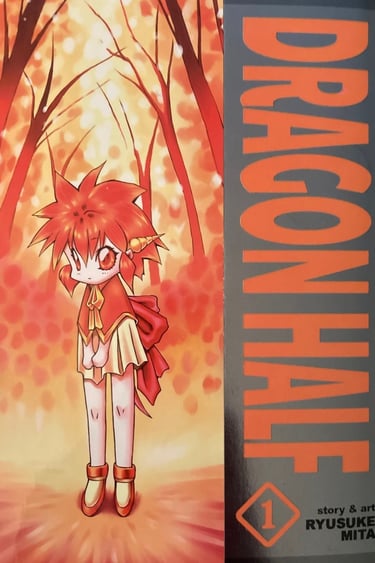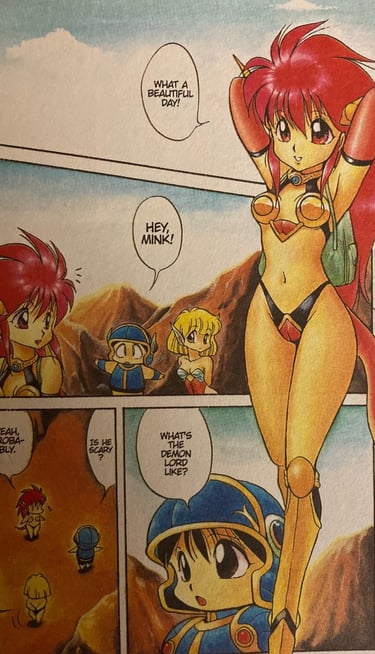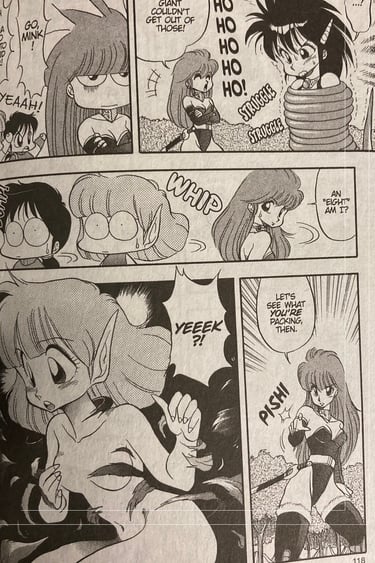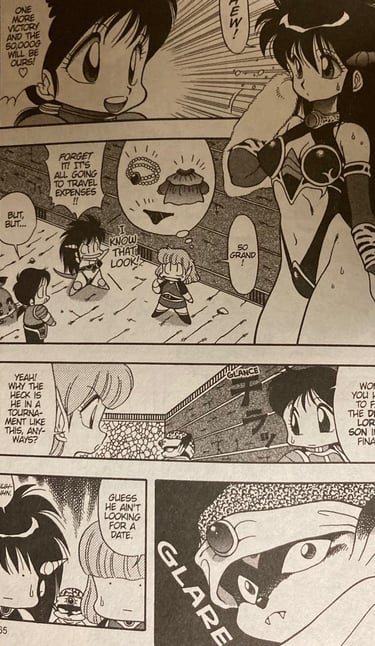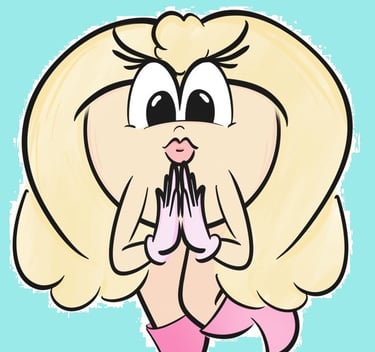For all the manga that now crams bookstore shelves, a considerable number of titles remain stranded in Japan, especially those of ‘80s and ‘90s vintage. Until recently, Dragon Half was one such series; begun in 1988 by Ryusuke Mita, it never achieved the elite popularity of, say, Dragon Ball, to which much of its humor owes. It never received a hugely successful anime adaption, either—just a two-episode OVA that was more a test pilot for a longer series that sadly never came.
But the manga did fine, filling seven tankobons (graphic novels) worth of content before concluding in 1994. Perhaps, had the series endured into the 21st century, a publisher might have deigned it worthy of a western release. But the Japanese comic is an ephemeral animal; all but the most mega-successful franchises are destined to be transplanted by their impending successors in a never-ending cycle of new-overtaking-old. It’s a constant circle of death and rebirth, so to speak, keeping the manga machinery perpetually printing. A few, like Dragon Ball and Sailor Moon, resist this perpetual trend, but like so many oysters washed across the seashore, even the brightest pearls soon return to the surf as another tide comes.
Dragon Half is no different, offering a disposable kind of fun that simultaneously resigned it to oblivion just as the Western anime boom was taking root. But here’s the irony: as manga rose in global profits, licensing fees also exploded, forcing the smaller publishers to skim that forgotten trough of expired franchises. And like a jewel plucked from the muck, company Seven Seas did just that, dredging Dragon Half up for a second life…and a new audience.
The story follows teenager Mink, a dragon halfling born of the union between her human father and dragon mother (who can assume human form herself whenever convenient). Fortunately, Mink’s physique favors the human side of the equation, comprising wide thighs and supple skin and a flowing mane of crimson hair. Indeed, her dragon “half” is barely there, punctuated only by a tail, retractable wings, and few other inconsequential details. Freak or not, she’d be the star of every homecoming parade.
She’s also extremely powerful, spewing fire as easily as one breathes, and able to trounce rock-solid golems just by frolicking through them. It’s these very abilities that seem to attract as much bad attention as good, with various beasts and rivals always emerging to take the cute dragon girl down. The script is unapologetic bubblegum. Sweet but flimsy.
Initially, Mink and her friends are seeking the fabled Pido Potion, a magic elixir that can turn any creature into, well, a complete and genuine human being. Only then, so goes the hope, can Mink win the love of Dick Saucer, a pop idol she’s long admired. But before long, Mink ends up half-bluffing, half blundering her way into a mission of far greater import—she must defeat Lord Azetodeth, the evil demon king. This is where the story truly begins.
It’s a plot of nonsense, of course, but Mita has fun using his amorphous setup to jab at anime conventions, parody video games and their adjacent cliches, and parade his female leads in always fetching, centerfold-ready ways. Some might find the humor a bit dated by contemporary standards, but the gaming motif and sensibility help grant the series a certain modernity other vintage manga sometimes lack. Mink is not unlike the popular half-genie Shantae, a video game character of similar likability who first appeared a full decade later. And the story, what with its “find the artifacts” structure and episodic pacing, resembles the step-by-step plotting of many adventure games still prominent today. Like a comedic Dungeon Master, Mita is clearly making his quest up as he goes. But if his goal is good-natured farce, he definitely succeeds, properly balancing his likable heroines against self-aware parody and the occasional heartfelt moment. It’s an exercise in meta-commentary before the concept had a word.
To behold Dragon Half on American bookshelves so many years after its initial run is to witness a miracle; it was, after all, a Japanese comic designed for a very different culture, time, and zeitgeist, now ready to be read by the West in 2022. Squished into three mega-volumes for more affordable and convenient consumption, joining Mink has never been easier for those willing to give the lass her chance. The premise and proceedings might prove too shallow for some, and a little “sexist” for others, but discerning readers will see this work for what it is—fiction without the usual pretension, written for an audience of willing disposition. It may not be a true classic, but if taken like a comic strip--a collection of gags enjoyed page by page--it’s a true charmer.
Hopefully, decades after her debut, Mink will receive her long overdue due.--D
Although generally well-drawn and paneled, not every joke or action in Dragon Half flows or follows as it should. In this instance, the upper two frames show Vina (the girl) compliment her father before, as shown in panel three, knocking him inexplicably on the head. Why does she do that? It's a joke, apparently...but it doesn't quite make sense as is, as if another frame containing the context for the joke was cut from the sequence. Occasional blips like these recur throughout the first volume.

